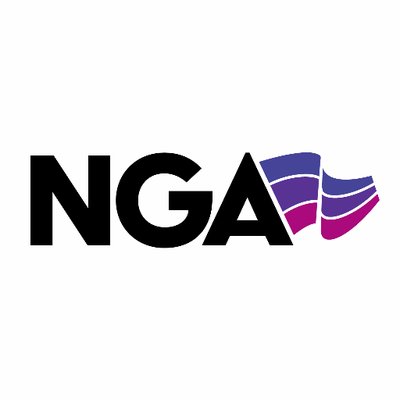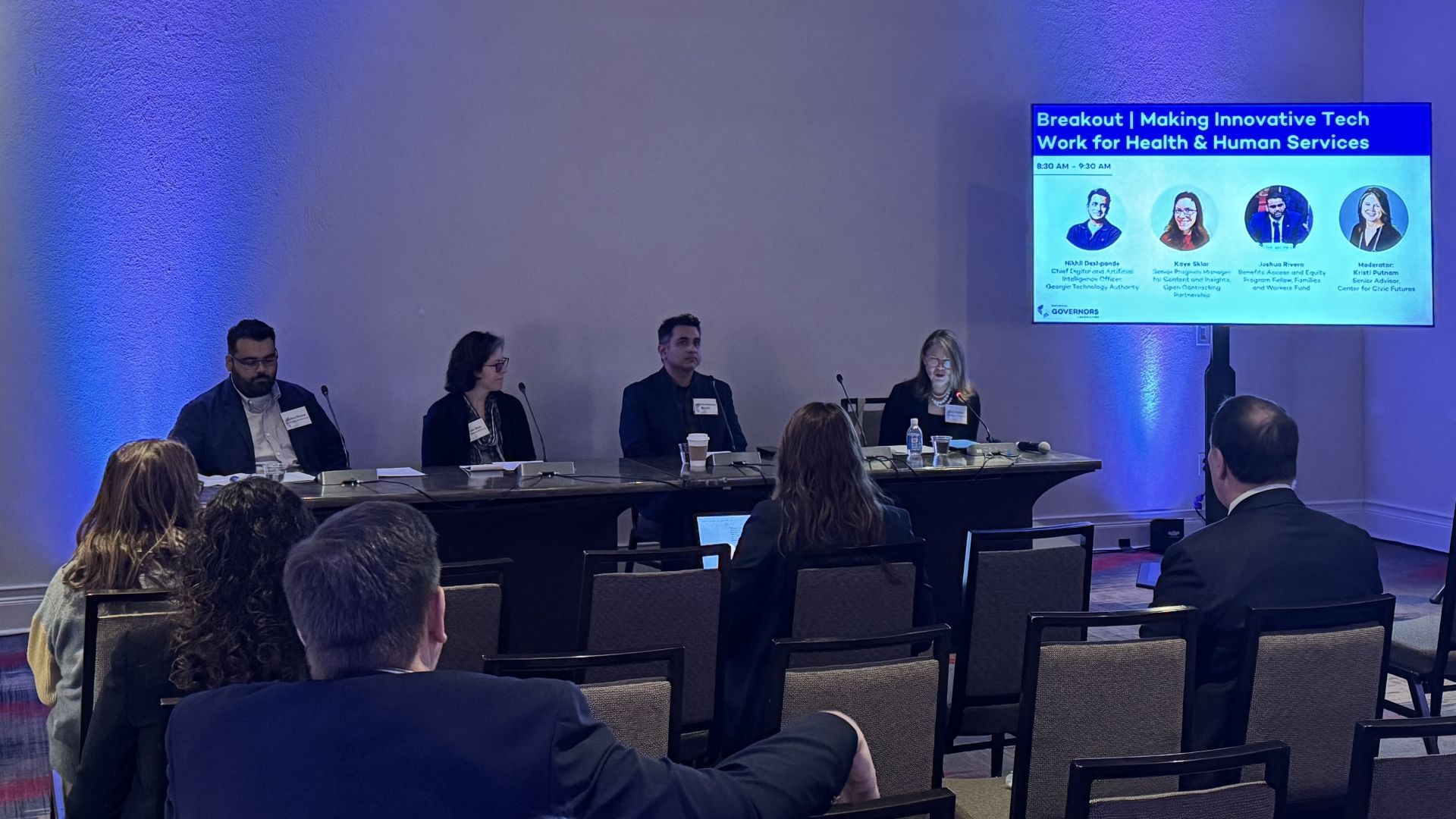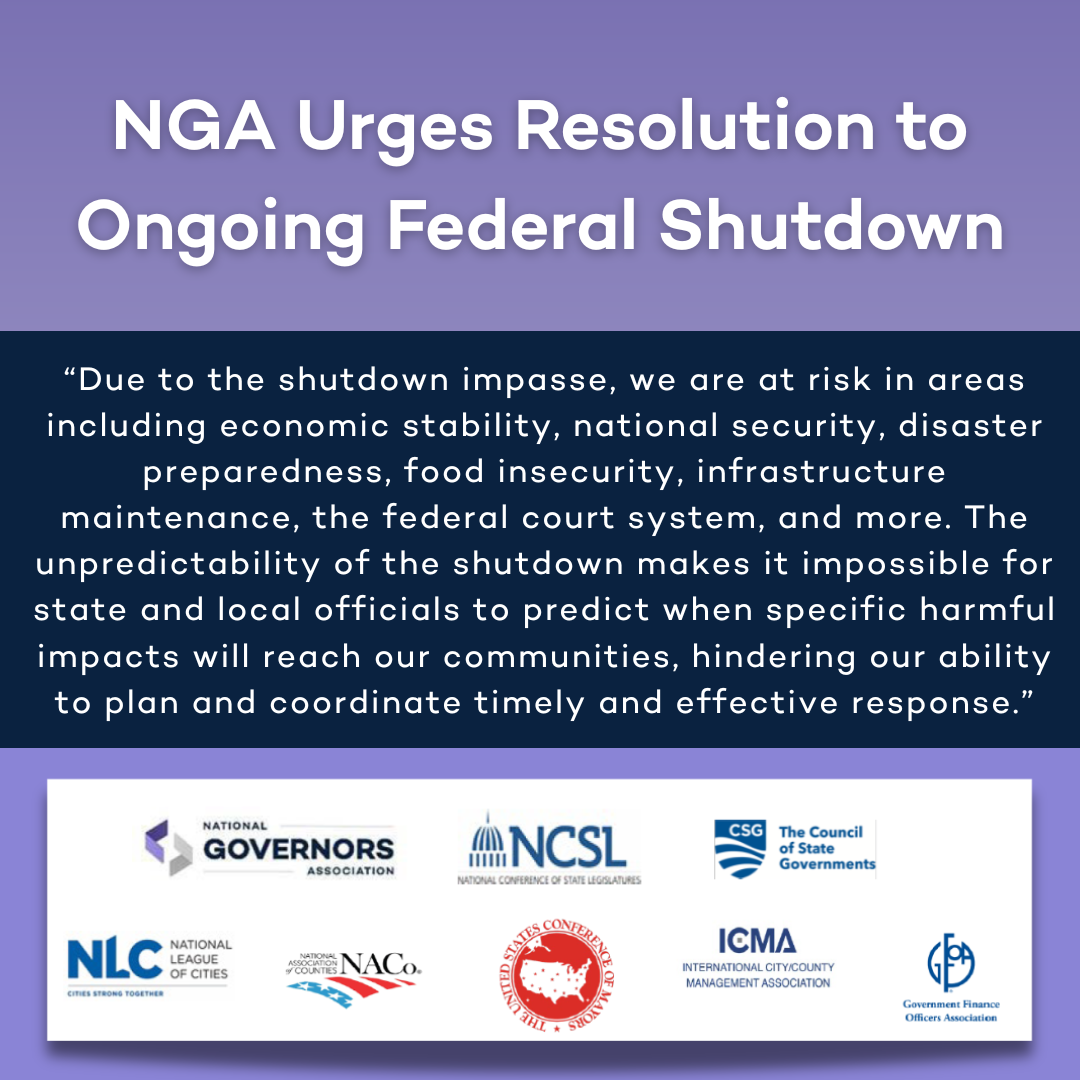The Honorable Kristi Noem
Secretary of Homeland Security
2707 Martin Luther King Jr. Avenue, SE
Washington, DC 20528
Dear Secretary Noem:
As outlined in the Council of Governors letter dated April 30, 2025, we convened our states’ disaster experts to leverage their experiences and expertise to develop input on Federal Emergency Management Agency (FEMA) reform. Key topics arising from that discussion are attached to this letter.
As you know from your tenure as Governor, we are on the front lines when disaster strikes and embrace the paramount responsibility to support our communities and work with localities to manage the disasters impacting our states. We know what it takes to mobilize resources, coordinate agencies, and deliver relief quickly to those in need. However, we know that we cannot respond and recover from catastrophic disasters alone. In these moments, time is critical and so is federal support. While our states stand ready to lead, we need FEMA and the broader federal emergency response system to be an effective partner. And while there are areas where FEMA and other federal agencies perform well, the current system must be transformed. The challenges we face on the ground are too often met with delays, red tape, and inconsistent support. It’s clear that all involved agencies must be retooled from top to bottom. We need a system that gives states flexibility, accelerates response times, and eliminates bureaucratic barriers so that we can better meet our states’ unique needs in times of crisis. Simply put, the federal disaster response programs need urgent change. Americans must be better served. And as Governors, we’re committed to lead these efforts, but we need a federal partner that brings that same level of urgency, competence, and accountability.
We look forward to continuing to partner with you as you look at ways to transform and reimagine federal disaster response to ensure cost effective, efficient, and meaningful relief to those impacted by disasters.
We are especially grateful for your leadership as Co-Chair of the FEMA Review Council. We would welcome the opportunity for the Council of Governors to discuss FEMA transformation with you and serve as a partner as you look to identify and implement reforms to FEMA to ensure that we collectively meet the needs and expectations of the American people during their hardest days.
Sincerely,
Governor Josh Stein
State of North Carolina
Governor Glenn Youngkin
Commonwealth of Virginia
Council of Governors State Disaster Experts Recommendations
State-Federal Collaboration: Reinforcing What Works and Reimagining What Doesn’t
Reinforce Capabilities Built During Preparedness to Support a Timely and Effective Response – The federal government has a key role to play in disaster preparedness by supporting ongoing standards and functions, providing training to states and locals through programs such as the Emergency Management Institute, as well as delivering technical assistance to develop plans to meet new and evolving threats and exercises that continue to ensure a well-practiced response. Additionally, as states and localities look at potentially taking on new roles in disaster response and recovery, preparedness funding, such as that offered by the Emergency Management Performance Grant, which has a 50/50 federal-state cost share, will be vital to build capabilities to ensure that when disasters strike, we have the tools, resources, and capabilities to act quickly.
Strengthen Locally Led, State Managed, Federally Supported Responses – Having a flexible federal disaster response cadre that is agile enough to respond quickly to state and local needs upon request where it exceeds their capacity to respond alone should be the gold standard. Each disaster is unique, and a blanket disaster response creates gaps in direct community assistance and administrative burdens across all levels of government. While local responders are the tip of the spear in disaster response, federal government support remains vital to responding to disasters that exceed the state’s capacity to respond. As you consider critical issues such as disaster declaration thresholds and the types of disasters covered by federal disaster declarations, we ask you to work with Governors and state emergency managers to ensure that any changes are informed by those most impacted.
Given state budget cycles and requirements to maintain a balanced budget, even states with the most robust emergency management are unable to self-fund disaster response to truly catastrophic disasters. The Disaster Relief Fund is a fundamental part of federal disaster response, enabling FEMA to deploy resources rapidly in declared disasters, and should be consistently funded to meet identified needs without risk of reverting to immediate needs funding. Additionally, federal funding of regional specialty response teams (e.g. swift water response teams, HazMat Teams) provide much needed capabilities that save lives. When concurrent or multi-state disasters strike, it is essential that the federal government continue to facilitate regionalized resourcing to avoid states and local governments competing for limited resources and therefore unnecessarily increasing costs.
Additionally, small changes to existing federal support to state and local governments can pay significant dividends to improving the recovery of communities. For instance, adjusting housing support for individuals impacted by disasters to allow for repairs and long-term housing, in addition to supporting temporary housing, will allow communities to address housing shortages created in the wake of catastrophic disasters. In addition, leveraging state and local expertise in the damage assessment process will allow for expedited reviews and quicker response times. There are often unique building codes and standards in each community so allowing that knowledge base to inform the damage assessment process will result in significant improvements to the process. Ensuring states and territories have clarity on program eligibility and assistance to tribal communities will allow for a more informed and effective coordination of resources.
Modify Federal Disaster Public Assistance Programs to Support Forward Funding and Increased Flexibility for States and Territories – During disasters, states and localities work together through mutual aid and the Emergency Management Assistance Compact (EMAC) and with private partners, non- governmental organizations and, when needed, the federal government, to save lives, mitigate impacts and get communities back up and running and local economies restored as quickly as possible. Federal support
to states and locals through programs, such as the FEMA Public Assistance program, during major disaster declarations are essential to putting communities on the path to recovery and therefore reducing long-term costs. Without this federal assistance, it will be difficult for communities to rebuild while maintaining local government services. The current program process requires states and local governments to carry the burden of paying for response and recovery to catastrophic disasters, while also trying to maintain existing community services. It is also important to note that the EMAC, which facilitates mutual aid across jurisdictions, conceptually relies on FEMA Public Assistance or similar federal support for impacted states and territories to afford many of the costs associated with out-of-state personnel and assets. Additionally, the federal review process is time consuming and unpredictable contributing to project delays and increased costs. Instead, the federal government should consider distributing support for key infrastructure projects and disaster response through a forward funding mechanism that is sized based on independently verifiable metrics (e.g., maximum wind speed within given radius, EF scale, rainfall amounts/duration, impacted population size) that indicate anticipated need while providing technical assistance to states, as needed.
Access to planned federal funding in the immediate aftermath of a disaster would help states launch recovery projects quicker and increased flexibility would allow federal funds to better meet the needs of communities. The Council should consider recommending that FEMA disburse an initial tranche of funding immediately after a disaster through a block grant. Rather than requiring post-event applications that take weeks or months to review and approve, send the funding through a block grant that is triggered immediately post-event based on independently verifiable metrics.
To be eligible for such a block grant, states would need a pre-approved action plan on file with FEMA, and the money would be administered according to that action plan and meet the unique needs of the state and disaster area. This is similar to local hazard mitigation plans currently required every five years. Block grants should not be the end of the funding, though. For many disasters, more funding will be needed. Those subsequent funds could be determined based on damage and needs assessments. Requiring states and territories to submit and have federally verified plans on file in advance of a disaster that identify the intended use of the funds will ensure that the disaster response can hit the ground running. The use of a forward funding model will also mitigate the chance for duplication of benefits and inherently reduce the administrative burden and costs on the federal government. Rather, the federal government can assume a monitoring and compliance role to ensure spending adheres to pre-approved plans and adjust any additional funding awards based on completed damage assessments.
Increase Certainty and Speed in Federal Funding and Decision-Making to Improve Recovery Timelines and Outcomes – To fully recover from a major disaster, communities require federal investments to rebuild and provide permanent housing solutions–or else risk suffering long-term. HUD’s Community Disaster Block Grant, Disaster Recovery (CDBG-DR) is an essential resource available for communities for long-term recoveries, particularly for housing needs. Permanently authorizing CDBG-DR, consistent with the Reforming Disaster Recovery Act (S. 1686/H.R. 5940), would enhance the program’s efficiency and predictability.
In addition, federal programs that integrate mitigation into immediate rebuilding efforts pay large dividends in long-term recovery. Programs, such as Hazard Mitigation Assistance, the Hazard Mitigation Grant Program, Flood Mitigation Assistance, and others, allow for communities to be able to rebuild resiliently and reduce the impacts of future disasters. With more flexibility in how these programs can be applied, simplified federal review processes, and consistent review timelines, these programs could be unleashed to their full potential–enhancing the nation’s ability to implement mitigation projects that provide lasting protection and help minimize or eliminate future loss of life and property.
Partner with States to Build Resiliency – According to a recent Chamber of Commerce report, every $1 spent on disaster resilience yields $13 in economic savings, damages, and cleanup costs, as it is much less expensive to protect infrastructure than it is to rebuild. As the administration looks to enhance efficiency and cut costs for disasters, investing in resilience is key to mitigating exposure to massive costs, as well as public safety risks. The federal government should invest in transformational projects that have the greatest impact on building resilience because it has the resources to pinpoint and support our most vulnerable communities across the nation. Federal support for building resiliency into infrastructure that facilitates inter-state commerce is imperative to mitigating the impacts of future disasters. While there were challenges with the Building Resilient Infrastructure and Communities (BRIC) program, we would welcome discussion on ways to streamline future resiliency programs to meet these needs more quickly and effectively.
Further Recommendations & Considerations on FEMA Reform
- Outline a Planning Horizon – As the federal government looks at potential reforms, we ask that Governors be provided with a planning horizon and clear communication on intended reforms so that they can work with state legislatures and agencies to adjust to any changes to federal resources to minimize vulnerabilities for communities and residents and maximize the impact of federal, state, and local resources. Changes to the threshold model may put severe strain on state, local and community budgets and resources in the wake of disasters. If significant changes to federal response and recovery resources and processes (e.g. funding, personnel, or changes to disaster declaration thresholds and other policies/programs) are made, they should be done in a graduated fashion over at least a 3-year timeline to give state and local governments time to plan for and work with state legislators to realign any programs in coordination with federal changes.
- Strengthen Federal Interagency Coordination – In 2022, the Government Accountability Office identified more than 30 federal agencies involved in disaster recovery. While many of these programs provide vital services in support of small businesses, farmers, those in need of housing assistance and many more, it also creates a complex web for survivors to navigate, increases administrative burdens on impacted states and localities as they support impacted individuals and businesses and avoid the potential for duplication of benefits. The federal government should consider ways to strengthen federal interagency collaboration to provide for more effective collaboration across agencies and decision- making. Consideration should also be given on whether it would be beneficial to consolidate certain programs, such as federal housing programs, authorizing states to use FEMA funds for permanent housing repairs as they did in response to Hurricane Harvey, so the dollars go further faster and with less red tape. Holistically, the federal apparatus should work collectively to enable federal personnel to work with states to factor in each community’s own unique characteristics and needs, allowing for greater flexibility in how federal resources can be utilized based on the unique environment will allow for a greater per dollar impact.
- Leverage Technology to Expedite Response and Recovery Operations – Simple adjustments, such as converting paper-based processes to electronic, in addition to more significant technological adjustments, such as developing more system interoperability and a single application platform for individual and community assistance funds across federal agencies, will allow FEMA to continue to administer individual assistance while also resulting in a more efficient and effective distribution of information and resources, allow for timely detection and response to waste, fraud, and abuse, as well as lower administrative costs at the federal, state, and local levels.
- Expedite State Capacity for Project Implementation By Reducing Bureaucratic Hurdles While Maintaining Oversight Role– Reduce ongoing burden and delays for states by changing reimbursable programs funded by FEMA to an advanced payment or block grant drawdown option. Granting states immediate access to a funding line of credit, including for Public Assistance as outlined above, HMGP and other reimbursable programs, so communities are not dependent on their cash reserves to fund recovery while they wait for federal reimbursement. Using the prior submission of state plans as outlined above would allow federal agencies to focus on monitoring and compliance as opposed to approving each project individually. This would benefit recovery times and reduce administrative overhead at the local, state and federal level.
- Clear Guidelines and Consistent Timelines – For states and local governments to most effectively utilize federal resources in putting communities on the path to recovery quicker, greater flexibility in how those resources can be utilized is a key aspect. Clarity and consistency on limitations on how federal resources can be used, and clear and transparency timelines associated with any federal review periods that may remain prior to leveraging federal funds, will allow for more predictable project delivery and reduce cost increases associated with unanticipated delays.
- Increase Flexibility of State Disaster Management Administration Costs – To ensure effective management and accounting of disaster funding, FEMA regulations allow a small percentage of the funding for management costs. Current law limits these management costs to each specific disaster declaration, and regulations do not allow grantees to economize by managing workloads across all open disasters. Allowing states to leverage management costs across all open disasters and incentivize faster disaster close-out will support preparedness, longer-term recovery and mitigation efforts, as well as drive down the costs of disasters nationwide. This is consistent with the Disaster Management Costs Modernization Act (H.R. 7671).
- Ensure FEMA Can Focus Where it is Needed Most, on Disasters – While FEMA has done a lot of good work supporting states and localities following disasters, it has also at times been tasked with responsibilities outside of its expertise. This increases the administrative burden on the agency while slowing down decision-making on programs outside of their expertise. Moving some programs, such as grants associated with broader Department of Homeland Security (DHS) expertise, such as those associated with Counterterrorism, cybersecurity, protection of critical infrastructure and other national security grant programs under DHS, and allowing FEMA to remain focused on funding and provision of resources related to disasters, including grant programs associated with both natural disasters and unintentional man-caused events, would optimize the intended functions and purposes of both the agencies and these programs.












